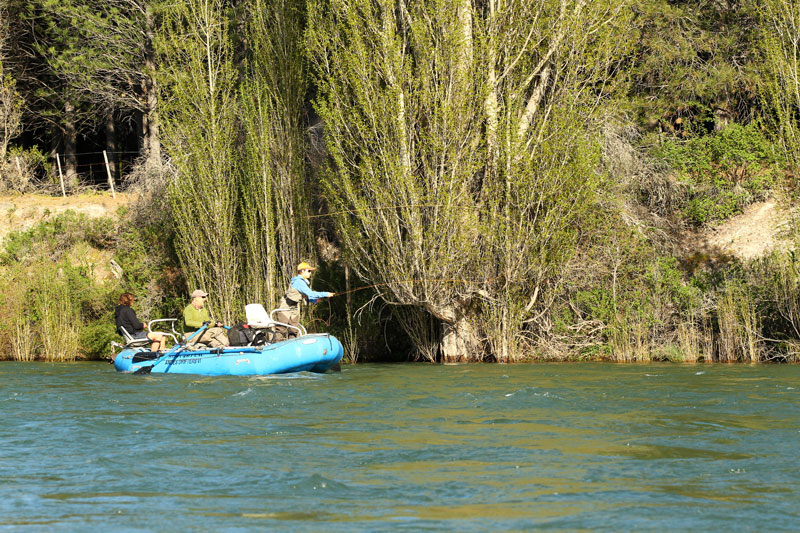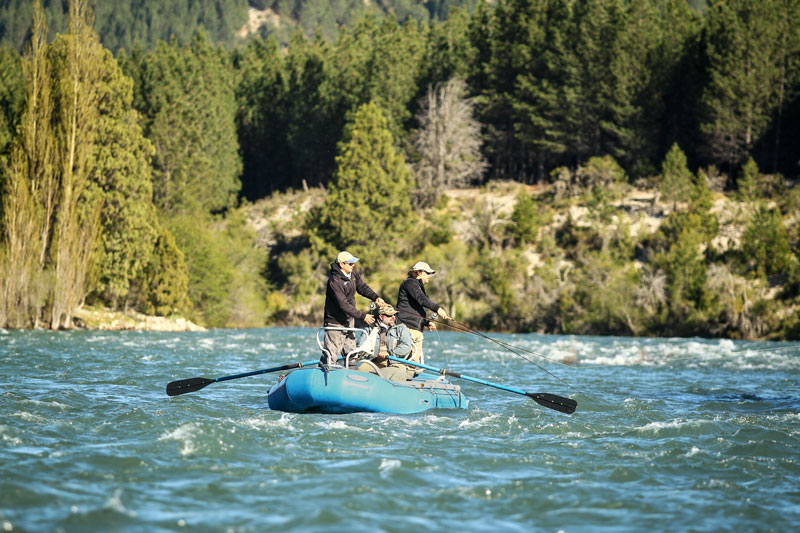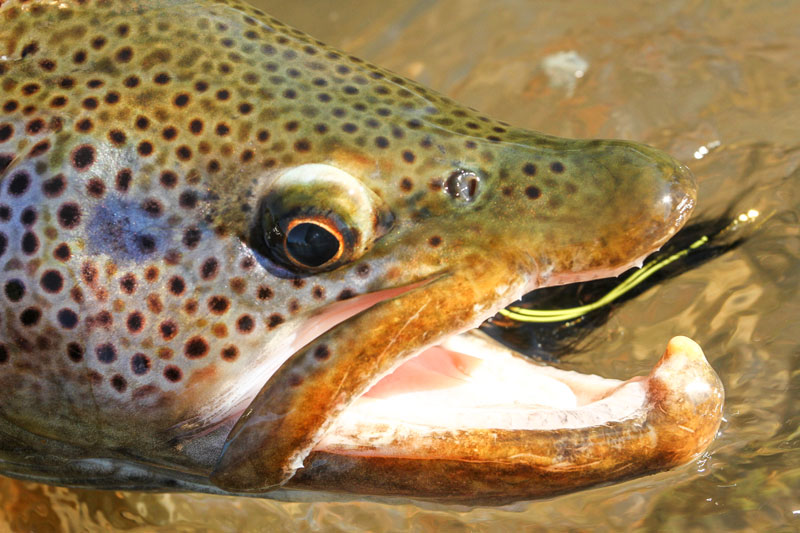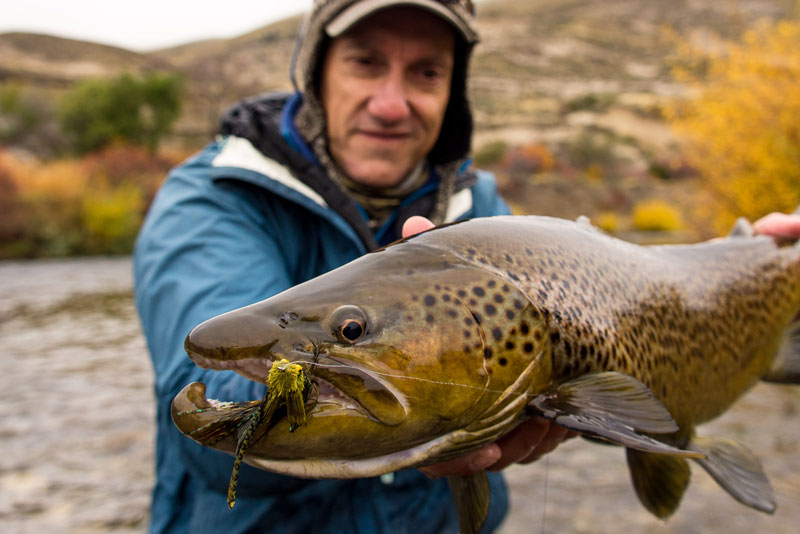The Patagonia fishing season opens in the middle of the spring, November 1, when the peaks of the Andes Mountains are still covered with snow and the forest is fully green. Rivers and lakes are loaded with water, the snow runoff is still going, and the majority of our rivers and streams are in prime condition to fish.

Even though the runoff produces strong flows, our rivers remain clear. This is because the snow in the Andes melts gradually and the forest helps to filter the runoff. But the main reason that our rivers run clear during spring is that many of them are the natural outflow from large, deep lakes that are also very clear. As a result, our rivers have stable flows, without dramatic variations in the water levels.

Fishing dry flies is what made these North Patagonian waters famous and is possible through almost the entire season. But the clear water and really high flows are the perfect conditions for targeting big trout, especially browns, using large, weighted streamers cast very close to the banks from a boat floating down the river. This is what makes spring in Patagonia a true paradise for any streamer junkie.

High and fast water allows us to float longer stretches of river than normal, increasing our opportunities to catch more fish with streamers along the way. The velocity and power of the rivers force trout to hold in protected places where they don’t have to fight the current, but are still able to get access to food. These protected places that we target with our flies are usually right next to the banks, where we can find slower water because of points, boulders, branches, roots, bushes or any other structure that slows down the current. Also, big back eddies behind trees and smooth seams behind them often hold fish. Another productive type of structure is where a drop-off meets a bank, producing shallow, rippling water, which is a prime spot for big browns.

There are two main techniques for streamer fishing from a boat. The first involves using a full sinking line, an unweighted fly, and a very short tippet section (around 2’ and no longer than 3’) without a tapered leader. This setup allows the fly to sink fast and is ideal for deep and strong currents. The drawback to this technique is that it requires more effort and time to pick up the line and recast.
The second stream fishing technique requires a traditional WF floating line, a heavy, weighted fly and about a 7’ tapered leader. Many of our guides prefer this setup over the full sinking line setup because it allows the angler to make line corrections more efficiently, allowing him or her to keep the fly in those calm spots along the banks for a longer period of time. This results in more hook-ups. It’s also easier to pick up the line and recast to the next target.

Both techniques are very visual, especially when using lightly colored flies. Seeing our flies in the water while stripping them allows us to better understand how our flies behave and how fast (or slow) we are working them. Usually we strip our flies three or four times after each cast. But before we pick up the line to make our next cast, we pay special attention to see if there is a trout chasing the fly. If so, we can either keep stripping to trigger the take, or make a very sudden stop, which can also produce a strike.
The combination of high, clear waters and the will of big trout to take streamers makes spring in Northern Patagonia the best time of year to fish them. So if you consider yourself a true “Streamer Junkie” you should visit us between November and December! Call or email us with any questions.

